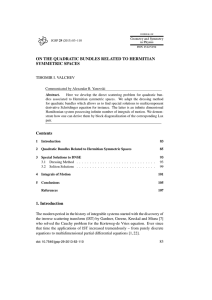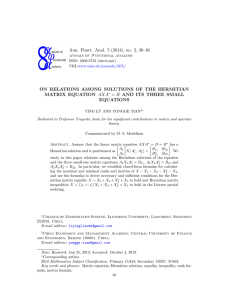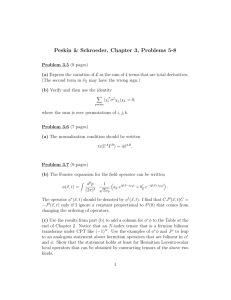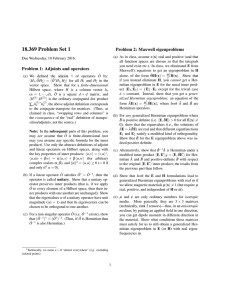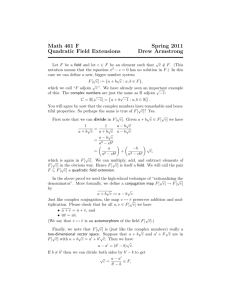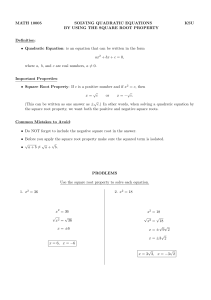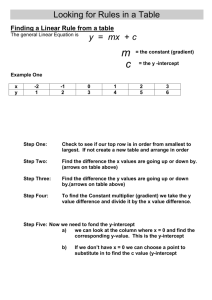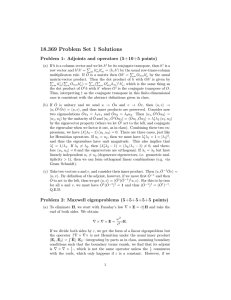HERMITIAN FORMS 1. Quadratic Extension Fields Definition 1.1. If δ
advertisement
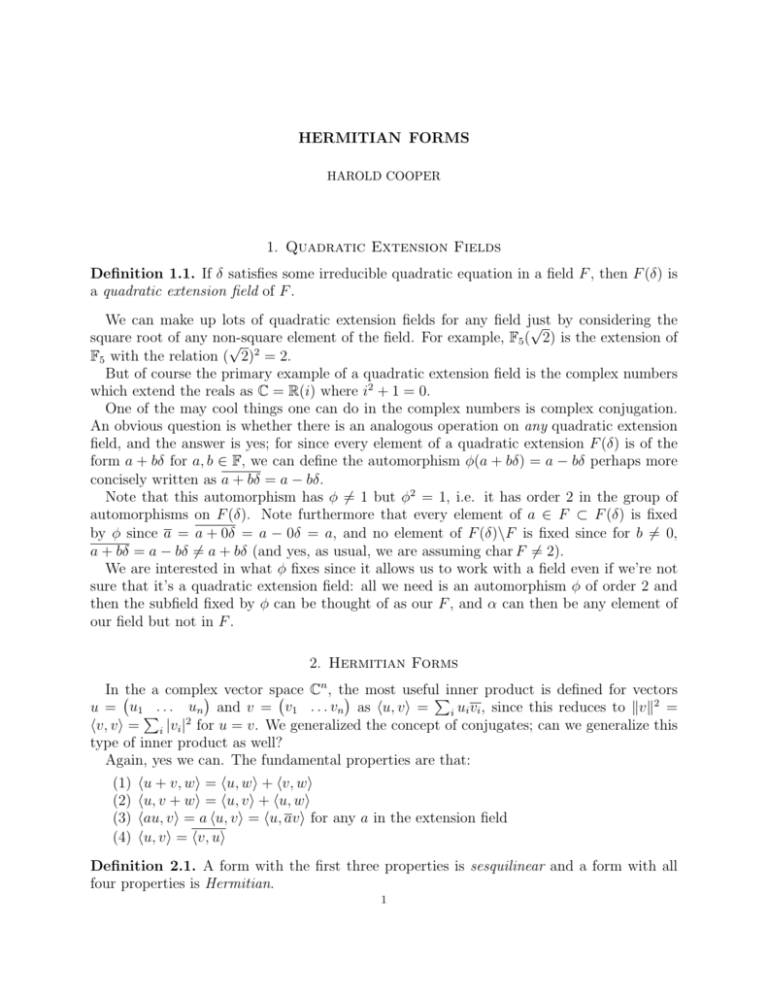
HERMITIAN FORMS HAROLD COOPER 1. Quadratic Extension Fields Definition 1.1. If δ satisfies some irreducible quadratic equation in a field F , then F (δ) is a quadratic extension field of F . We can make up lots of quadratic extension fields for any field just √ by considering the square root of any non-square element of the field. For example, F5 ( 2) is the extension of √ F5 with the relation ( 2)2 = 2. But of course the primary example of a quadratic extension field is the complex numbers which extend the reals as C = R(i) where i2 + 1 = 0. One of the may cool things one can do in the complex numbers is complex conjugation. An obvious question is whether there is an analogous operation on any quadratic extension field, and the answer is yes; for since every element of a quadratic extension F (δ) is of the form a + bδ for a, b ∈ F, we can define the automorphism φ(a + bδ) = a − bδ perhaps more concisely written as a + bδ = a − bδ. Note that this automorphism has φ 6= 1 but φ2 = 1, i.e. it has order 2 in the group of automorphisms on F (δ). Note furthermore that every element of a ∈ F ⊂ F (δ) is fixed by φ since a = a + 0δ = a − 0δ = a, and no element of F (δ)\F is fixed since for b 6= 0, a + bδ = a − bδ 6= a + bδ (and yes, as usual, we are assuming char F 6= 2). We are interested in what φ fixes since it allows us to work with a field even if we’re not sure that it’s a quadratic extension field: all we need is an automorphism φ of order 2 and then the subfield fixed by φ can be thought of as our F , and α can then be any element of our field but not in F . 2. Hermitian Forms n In the a complex vector space C , the most usefulPinner product is defined for vectors u = u1 P. . . un and v = v1 . . . vn as hu, vi = i ui vi , since this reduces to kvk2 = hv, vi = i |vi |2 for u = v. We generalized the concept of conjugates; can we generalize this type of inner product as well? Again, yes we can. The fundamental properties are that: (1) (2) (3) (4) hu + v, wi = hu, wi + hv, wi hu, v + wi = hu, vi + hu, wi hau, vi = a hu, vi = hu, avi for any a in the extension field hu, vi = hv, ui Definition 2.1. A form with the first three properties is sesquilinear and a form with all four properties is Hermitian. 1 Thus sesquilinear forms (which include the Hermitian forms, if that wasn’t clear) are almost bilinear, differing only in their treatment of scalar multiples of their second arguments (the second half of (3), above). Furthermore, you may note that (4) above makes Hermitian forms have similar properties to symmetric forms, as seen in the following proposition. Note that at this point we assume throughout these notes that F is a field with an automorphism def φ of order 2 where we denote a = φ(a), V is a vector space over F , and B : V × V → F is a form on V . Definition 2.2. A matrix A is Hermitian when A = At (where by conjugation of a matrix we mean simply conjugation of each of its elements). Thus note that the Hermitian matrices in the subspace of vectors with entries only in the fixed field of conjugation (e.g. R in the case of C) are exactly the symmetric matrices in that subspace. Proposition 2.1. If B̂ is a matrix for B under some basis then B is Hermitian iff B̂ is Hermitian. As a final generalization of our use of conjugation in C, we define an analogue to the vector norm in Cn , i.e. we associate a quadratic form Q : V → F with B by Q(v) = B(v, v). Proposition 2.2. If B is nonzero and Hermitian then Q is nonzero. 2
